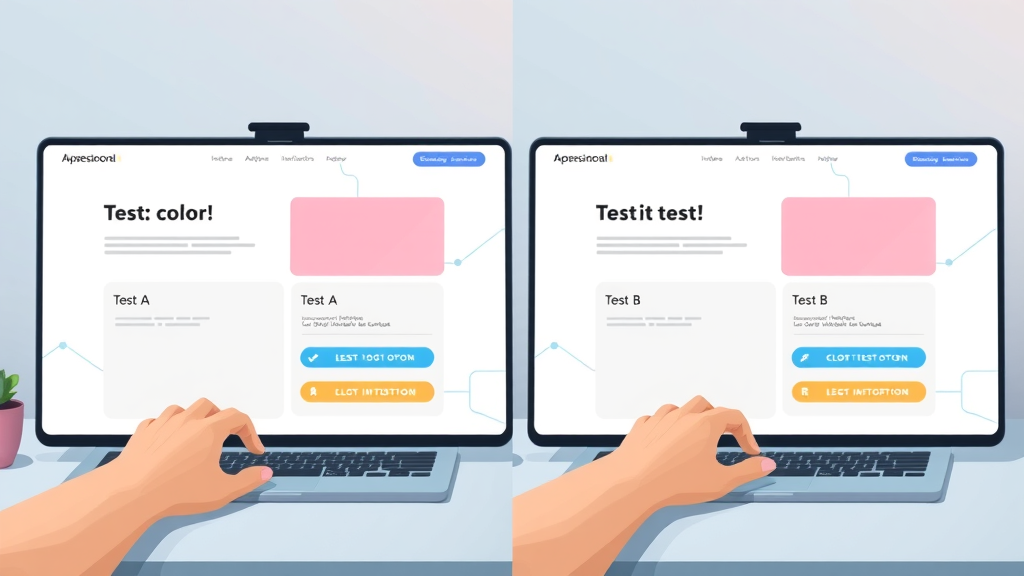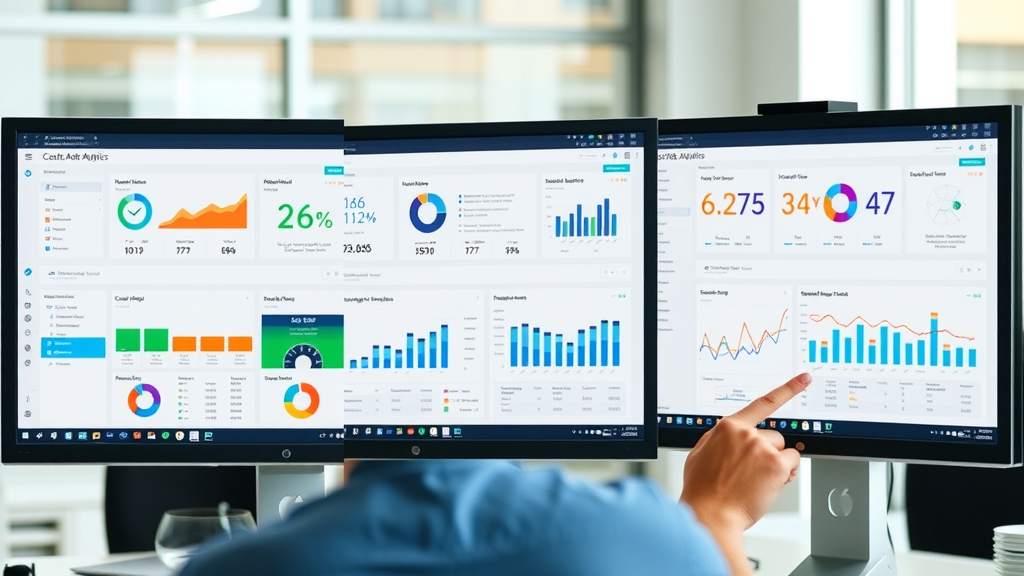Did you know 80% of affiliate revenue comes from just 20% of traffic sources ? This surprising truth changes how the best affiliate marketers approach affiliate traffic analytics, separating industry leaders from the rest. If you’re ready to uncover the real drivers behind your top affiliate sales, optimize your affiliate links, and grow your affiliate income, this guide will reveal proven strategies and powerful tools to track, measure, and maximize every traffic source effectively.
Why affiliate traffic analytics Matter: Startling Statistics That Change Everything
For affiliate marketers, understanding affiliate traffic analytics goes beyond numbers—it's the secret weapon for explosive growth. The reality is stark: a small handful of traffic sources consistently deliver the bulk of your sales. By mastering analytics, you’ll know exactly which sources fuel your best results, allowing you to double down where it counts. Practical examples abound—imagine scaling your top affiliate offers after discovering your email campaigns drive more conversions than social media or realizing your organic search engine traffic consistently outpaces paid media marketing campaigns.
This level of insight doesn’t just inform—it transforms your entire affiliate marketing strategy. Utilizing precise affiliate tracking tools and targeted optimization techniques ensures you don’t waste resources on low-performing sources. Review your analytics with purpose and you’ll uncover actionable data—for instance, a sudden jump in conversion rate from a new content marketing landing page signals an opportunity to refine and replicate across your other campaigns.

- Discover how 80% of affiliate revenue comes from just 20% of traffic sources—a number most affiliate marketers overlook. Uncover unexpected truths that set high-performing affiliates apart from the crowd.
What you'll learn in affiliate traffic analytics and sales optimization
- Master the identification of traffic sources with the highest conversion rates
- Track affiliate links and understand their impact
- Leverage google analytics and other tools for precise affiliate tracking
- Optimize affiliate offers and landing pages to boost affiliate income
Understanding affiliate traffic analytics: Foundations for Affiliate Marketing Success
At its core, affiliate traffic analytics involves analyzing where your website traffic comes from, how visitors interact with your affiliate links, and which sources reliably convert into sales. This process helps affiliate marketers build winning strategies based on real data rather than guesswork. When you distinguish between each traffic source—whether social media, search engines, or a paid facebook ad—you're empowered to adjust your marketing effort for maximum effect. A diverse mix of traffic sources is the cornerstone of sustainable affiliate program growth, ensuring you’re not reliant on one channel.
Successful affiliate marketing hinges on understanding key terms like conversion rate , attribution, and ROI. Affiliate programs often use networks that unify reporting and analytics, helping marketers track affiliate links and compare the relative quality of different sources. Whether you’re new to affiliate marketing or looking to optimize established campaigns, recognizing patterns across these metrics enables smarter decisions that can rapidly transform outcomes.
Defining affiliate traffic analytics and key terms
- What are affiliate traffic analytics?
- Traffic source vs. traffic sources: diversity matters
- The role of affiliate links, affiliate network, and affiliate programs

Affiliate traffic analytics consists of tracking metrics such as click-through rates, conversion rates, traffic source breakdown, and average order value across your affiliate links . By doing so, affiliate marketers can pinpoint which traffic sources are most effective and adjust their affiliate marketing strategies. Diversity in traffic sources—mixing organic search engine visitors, social media marketing, paid google ads, and referral links from other partners—ensures greater stability and resilience for affiliate program revenue.
The affiliate network acts as the central hub for managing offers, tracking sales, and generating reports. This simplifies your workflow, but successful affiliate marketing depends on continually analyzing incoming data. Whether you’re measuring which affiliate link produces the highest affiliate income or comparing the effectiveness of different landing pages, robust analytics provide the edge needed to rise above the competition.
How affiliate marketing depends on robust analytics
- From data to strategy: actionable insights
- Success stories where enhanced analytics transformed affiliate marketing campaigns
"Without effective affiliate traffic analytics, marketing is just guesswork." – Leading industry expert
Affiliate marketing without analytics is like flying blind. Imagine launching two affiliate offers: one generates hundreds of clicks but few sales, while another quietly converts visitors with fewer but higher-quality leads. With robust analytics, you can identify these trends, reallocate your budget to high-performing channels, and tweak your messaging for even better results. Leading affiliate programs have turned struggling campaigns into top affiliate successes simply by acting on traffic source and conversion rate insights.
Real-world examples abound: an affiliate marketer tracking email campaigns realized their highest ROI came from referral partnerships, not paid social media marketing as they initially thought. Another saw a spike in affiliate income after split-testing landing pages based on user traffic analytics. This is where affiliate traffic analytics become indispensable, transforming raw numbers into profitable action.
Mapping Your Traffic Source: Top Traffic Sources Every Affiliate Marketer Should Track
To maximize your affiliate program’s success, you must map and monitor every significant traffic source . Begin with organic search engines, which often produce long-term, sustainable results. Social media platforms, when paired with focused social media marketing, can generate viral engagement and spike traffic to your affiliate links. Paid sources like google ads and facebook ad campaigns drive targeted visitors quickly—ideal for testing new affiliate offers and landing pages.
In addition to traditional sources, leverage partnerships within your affiliate network for special promotions, or use email campaigns and regular content marketing updates to engage and convert your audience. The most successful affiliate marketers use a mix of channels, tracking each one's performance to identify which combinations produce the highest conversion rates and affiliate income. By comparing these channels month-by-month, you can continually refine your affiliate tracking strategy, ensuring you’re always pursuing your top affiliate sources.
Breaking down key affiliate traffic sources
- Organic search engine traffic
- Social media and social media marketing
- Paid sources: google ads, facebook ad
- Partnerships via affiliate network
- Email campaigns and content marketing
Each of these traffic sources carries different strengths. Organic search engine traffic tends to have high purchase intent, while social media marketing allows rapid testing of affiliate offers. Paid sources are excellent for scaling up quickly, but they require diligent affiliate traffic analytics to avoid waste and track ROI. Content marketing and email campaigns build ongoing authority and keep your affiliate links front of mind for your target audience. Analyze each source separately to see which advances your affiliate program’s goals.
Don’t neglect referral partnerships. When a trusted site or influencer mentions your affiliate links, you gain not only their audience’s attention but also the potential for increased trust and higher conversion rates. By using affiliate network analytics and tagging tools, you can create a traffic source report that highlights opportunities for partnership expansion and strategic marketing effort allocation.
The affiliate link journey: from click to conversion rate
- Unique tracking for each affiliate link
- How click-through rates and conversion rates impact affiliate income

Understanding the entire journey from an affiliate link click to a successful conversion is critical. Use tracking parameters for every affiliate link to determine which are clicked most often and, crucially, which ones actually convert visitors into buyers. Monitoring click-through rate reveals the appeal of your ads or CTAs, but the conversion rate is where the true data gold lies—it tells you which sources are directly contributing to your affiliate income.
Tools like google analytics allow you to tag affiliate links with UTM parameters, compare performance across various campaigns, and analyze which content or traffic source brings the best results. This granular approach helps affiliate marketers isolate what works, correct underperforming channels, and develop a strategy anchored in real-time affiliate tracking data. Track every stage, review all sources, and you’ll be prepared for sustainable long-term growth for your affiliate program.
Essential Metrics in affiliate traffic analytics for Affiliate Program Growth
Analyzing the right metrics is at the heart of effective affiliate traffic analytics . Key performance indicators such as conversion rate , bounce rate, cost per click (CPC), and revenue per visitor provide a clear picture of which traffic sources, links, and affiliate offers drive true value. Without a disciplined approach to tracking these metrics, it’s easy to misallocate efforts or invest in underwhelming channels.
Smart affiliate marketers set benchmarks for each traffic source—like expected conversion rate from google ads versus organic referrals or revenue per visitor from a landing page. This critical data powers ongoing optimization, ensuring your affiliate program continuously evolves for better results. Use analytics dashboards to track progress over time, spot trends, and identify areas where even small tweaks can mean the difference between a stagnant and a top affiliate campaign.
Conversion rate, affiliate tracking, and attribution models
- Defining and tracking conversion rate and conversion rates
- Attribution: first-click, last-click, and multi-touch
- Tools for affiliate tracking and tag integration

Conversion rate measures the percentage of affiliate link clicks that result in a sale. It’s the metric that tells you if your traffic sources are truly working. Attribution models, such as first-click, last-click, and multi-touch, determine how credit for a sale is assigned to different traffic sources during the buyer’s journey. This helps you understand not just which source closed the sale, but which channels assisted in the conversion. Affiliate tracking tools, including specialized software and native dashboards from affiliate network platforms, let you set up tags, monitor click patterns, and analyze multi-channel performance at a granular level.
To ensure accurate data, integrate affiliate program tracking with your website or content marketing systems. Google analytics is a favorite for many affiliate marketers, thanks to its robust, customizable reporting. Proper use of tags, UTM parameters, and conversion tracking settings creates a transparent link between your marketing effort and the affiliate income it generates. Analyze these reports weekly to identify upward trends or sudden drops, and act quickly to capitalize on opportunities or solve hidden issues.
Landing page optimization and affiliate offers
- Landing page best practices for affiliates
- Split testing offers
- Measuring ROI and AOV (Average Order Value)
An optimized landing page can drastically boost your conversion rates. Start by ensuring each page is relevant to the promise of your affiliate ad or link—clear headlines, compelling CTAs, and mobile-friendly design are musts. Split testing (A/B testing) is a powerful technique where you launch two versions of a page or offer and measure which delivers more conversions. Over time, gradual improvements provide significant gains for your affiliate program .
Tracking ROI and AOV (Average Order Value) allows you to evaluate the quality of traffic your affiliate links attract. If a particular social media campaign yields a higher average order value despite lower traffic, double down on that channel. Affiliate traffic analytics unlock these patterns, letting you personalize affiliate offers for specific segments of your target audience and steadily increase your affiliate income.
| Traffic Source | Conversion Rate | Bounce Rate | CPC | Revenue per Visitor |
|---|---|---|---|---|
| Organic Search | 6.5% | 37% | $0.00 | $3.20 |
| Paid (Google Ads/Facebook Ad) | 4.2% | 50% | $1.25 | $2.80 |
| Referral/Partner | 7.1% | 34% | $0.20 | $3.75 |
Implementing affiliate tracking: Tools and Techniques for Reliable Data
Accurate affiliate tracking is essential to understanding the real drivers of your affiliate income. Most affiliate network platforms provide detailed analytics dashboards with reporting features for traffic source breakdown, conversion rate, and ROI. As your campaigns grow, integrate third-party tracking tools and scripts for more granular reporting and attribution transparency. Choose solutions that support custom tags, UTM parameters, and goal tracking for end-to-end data consistency.
For power users, advanced affiliate tracking involves blending native network analytics with custom scripts or managed solutions tailored to your marketing channels. This flexible approach allows seamless integration of affiliate tracking with platforms like google analytics, search engines, and social media. The result: comprehensive visibility and fast, actionable insights to guide every stage of your affiliate program lifecycle.
Affiliate network platforms and their analytics offerings
- Top affiliate network dashboard features
- What to look for in reporting
Leading affiliate networks, such as ShareASale, CJ Affiliate, and Impact, offer user-friendly dashboards displaying traffic sources, affiliate link clicks, conversion rates, and payout histories. Look for platforms that provide customizable reporting, clear attribution data, and integrations with external analytics tools. The best dashboards make it easy to identify your top affiliate offers and react quickly to changes in traffic or performance.
When selecting a platform, ensure it supports granular tracking for each affiliate link and landing page combination. This enables precise measurement of which creative assets, traffic sources, or targeting approaches yield the highest returns. Sync these with your internal content marketing or web analytics to centralize data for all your marketing campaigns.
Using google analytics for affiliate marketing

- Tagging affiliate links with UTM parameters
- Setting up goals and conversion tracking
Google analytics is a powerhouse for affiliate marketers who want to take affiliate tracking to the next level. Start by tagging all of your affiliate links with unique UTM parameters—this enables you to attribute each click and sale to the exact source, campaign, or ad group. Within the platform, set up goals and conversion events based on successful purchases or form submissions tied to your affiliate program.
Combining google analytics conversion tracking with data from your affiliate network creates a unified view of your marketing efforts. You can spot which sources drive the best conversions, discover missed opportunities, and fine-tune your campaign messaging for maximum affiliate income. This integration is a must for any serious affiliate marketer aiming to optimize every step in the visitor journey from click to sale.
Advanced affiliate tracking: Third-party tools and scripts
- Custom scripts vs. managed solutions
- Integrating google ads, search engines, and affiliate link tracking
While network dashboards and google analytics offer robust features, advanced affiliate marketers often deploy third-party tools or custom scripts for even deeper performance tracking. Managed solutions like Voluum or ClickMagick provide extended capabilities, including funnel tracking, advanced attribution, and A/B testing, all designed to extract actionable data from complex campaigns.
Scripts or plugins can bridge tracking across search engines, social media, and content marketing systems, ensuring that each affiliate link is properly attributed—no matter where the click originated. Managed solutions often offer integrations with major ad platforms like google ads and social networks, helping marketers monitor ROI on every media marketing investment and automate reporting across multiple channels.
Optimizing affiliate offers Based on affiliate traffic analytics Insights
The true value of affiliate traffic analytics becomes clear when you apply insights to sharpening your affiliate offers, landing pages, and overall campaigns. By consistently analyzing conversion rates, you’ll identify not only your top affiliate offers, but also opportunities for improvement. For instance, if a particular affiliate link is converting better on social media than on organic search, tailor future offers for that audience and channel for maximized income.
Refinement doesn’t stop with content—review which visuals, copy, and calls-to-action (CTAs) drive the highest engagement. Use data to select the right affiliate programs for your target audience, split-test landing pages, and measure the ROI of each channel. This ongoing cycle of analytics and optimization is the engine for sustainable affiliate program growth.
Analyzing conversion rates and refining offers
- Identifying top affiliate offers by traffic source
- Tailoring offers for specific social media and content marketing channels

Begin by segmenting your analytics data to spot which traffic sources produce the most conversions for each affiliate offer. Social media may work best for low-cost, impulse products, while longer-form content marketing attracts more committed buyers for high-value items. Adjust the structure, presentation, or even pricing of offers based on what resonates most with each channel’s audience.
Use the affiliate network platform’s traffic source breakdown, along with google analytics and UTM tagging, to monitor affiliate offer performance in real-time. React quickly to shifts in conversion rates—test new variations for top affiliate offers, adjust your content strategy, and allocate budgets to maximize affiliate income. This proactive approach ensures you don’t just track success, you create it.
Improving landing page design and engagement
- A/B testing for copy, visuals, and CTA
- How design affects affiliate program success

A strong landing page can multiply the conversion rate of your affiliate links. A/B testing reveals what truly works—one version may have a higher-performing CTA, a more persuasive headline, or images that better connect with your target audience. Adjust layout, button color, and testimonial placement, evaluating one variable at a time to single out the elements most responsible for driving affiliate income.
Remember, great design isn’t just about aesthetics; it shapes user trust and seamlessly guides the visitor to take action. Top affiliate marketers revisit their landing pages often, using insights from affiliate traffic analytics to introduce incremental improvements, refine messaging, and roll out changes across winning campaigns. Test everything—conversions often come from the smallest tweaks!
"Test everything—conversions often come from the smallest tweaks!"
Using affiliate traffic analytics with Content Market and Social Media Marketing
Content marketing and social media serve as dynamic engines for your affiliate program, amplifying the reach of your affiliate links. With the right traffic analytics, you can determine which topic clusters, content types, and platforms drive the highest click-through and conversion rates. Social media marketing strategies allow you to target specific audience segments, measure engagement, and double down on the content categories that perform best across different traffic sources.
Use affiliate tracking tools to map each post, ad, and landing page to its resulting clicks and sales. Over time, patterns will emerge—perhaps Instagram stories outperform blog posts for a specific affiliate offer, or LinkedIn campaigns yield higher order values for B2B programs. Adapt your content calendar and social outreach accordingly, leveraging every insight for top affiliate program growth.
How content marketing and social media drive affiliate links
- Measuring content performance using affiliate traffic analytics
- Using social media marketing strategies for targeted traffic sources

Track every piece of published content and related social shares using affiliate traffic analytics. Identify which articles, videos, or infographics send the most engaged visitors to your landing pages. Social media marketing platforms, such as Facebook and Twitter, allow for advanced targeting and retargeting, putting your affiliate offers in front of precisely the right segment of your target audience for optimum results.
Review analytics dashboards weekly to pinpoint high-performing content or posts. Then, update evergreen articles with fresh affiliate links, boost top posts with paid promotion, or repurpose proven formats for new audiences. Continuous adaptation keeps your content marketing and social media efforts both efficient and deeply profitable.
Tips for top affiliate success with cross-channel analytics
- Coordinating campaigns across social media, paid search engines, and content
| Channel | Clicks | Conversion Rate | Revenue per Visitor |
|---|---|---|---|
| Blog Articles | 2500 | 5.3% | $2.60 |
| Facebook Page | 3200 | 3.9% | $2.05 |
| Instagram Stories | 1200 | 6.1% | $3.10 |
Coordinate cross-channel campaigns so your target audience encounters your affiliate offers multiple times—via blog content, social media, and paid search engines. This multi-touch approach, tracked through affiliate traffic analytics, often leads to higher conversion rates and more substantial affiliate income. Always compare not only clicks, but end-to-end results from each traffic source.
The Role of Paid Traffic: google ads, facebook ad, and affiliate tracking
Paid traffic channels—like google ads and facebook ad platforms—offer a fast-track route to scaling affiliate offers. However, without precise affiliate tracking, it’s all too easy to overspend or target the wrong audience segment. The key is combining actionable analytics with best practices in creative strategy, landing page design, and attribution modeling to ensure every advertising dollar translates to measurable affiliate income.
Use tag-based tracking to monitor every paid campaign's ROI. Discover which ad creatives yield the best click-through rates, and pair analytics data with landing page split tests. Paid and organic traffic sources should be tracked together, blending insights for broader strategic optimization and continual growth for your affiliate program.
Evaluating paid campaigns with affiliate traffic analytics
- Tracking ROI from google ads and facebook ad campaigns
- Best practices for incorporating affiliate links in paid media marketing
Every paid campaign must deliver measurable results. Use UTM tracking for every affiliate link deployed within google ads or facebook ad initiatives. Monitor conversion rates by demographic, device, and placement, adapting creative messaging and affiliate offers as new data trends emerge. Establish clear ROI benchmarks for each campaign to ensure you're investing in channels that drive actionable growth.
Paid media marketing success also hinges on well-placed, relevant landing pages linked to your ads. Ensure your affiliate tracking is air-tight: every click should be traceable back to its ad source, with clear indicators of conversion or drop-off points. As a best practice, review all campaign data weekly to capture new opportunities and eliminate underperforming traffic sources.
Combining paid and organic traffic sources

- Retargeting strategies
- Blending traffic source data for strategic decision-making
Blending paid and organic traffic leverages the strengths of both worlds. Retargeting allows you to recapture high-interest visitors from organic channels (such as a search engine or content market post) with a precisely timed facebook ad or google ad offer. Use affiliate traffic analytics to measure the combined impact of both sources on affiliate link performance and overall program growth.
This dual approach creates a holistic marketing strategy that can dramatically improve conversion rates. Regularly overlay data from different channels in your analytics dashboard—identify cross-channel synergies and ensure both your marketing campaigns and affiliate tracking remain strategically aligned for optimal affiliate income results.
Integrating affiliate traffic analytics Data: Turning Insights into Increased affiliate income
The real magic of affiliate traffic analytics is in turning numbers into action. Move from data collection to data-driven decision-making by setting concrete benchmarks for each channel (organic search, social media, paid ads, content marketing) and reacting quickly to trends. Whether you notice a spike in conversion rate for a new affiliate program or a drop-off in a formerly top traffic source, analytics should always trigger proactive adjustment and optimization.
Scaling what works is the ultimate aim. Create detailed profiles of your best-performing affiliate offers and landing pages, then use these templates to expand to new sources or markets. Case studies regularly show that focused, data-driven adjustments—like shifting ad spending, updating landing page copy, or tapping untapped social media channels—can yield exponential affiliate income growth.
From numbers to action: How to optimize affiliate programs
- Setting benchmarks based on traffic sources
- Reacting to trends in affiliate marketing
Build actionable benchmarks for every critical metric—conversion rate, click-through, ROI, revenue per visitor—for each traffic source your affiliate program leverages. Watch for trends and seasonality in affiliate marketing data, responding quickly to maximize opportunities, or course-correct where performance drops. The most successful affiliate marketers treat analytics not as a reporting tool, but as an interactive playbook for daily tactical improvements.
Document what’s working and share best practices or templates across your affiliate network. Encourage continual innovation—if audiences respond well to a new type of content marketing or social media approach, scale it up immediately using repeatable workflows informed by your reporting tools.
Scaling what works: focusing on top affiliate strategies
- Building profiles for your top-performing offers and landing pages
- Case studies on affiliate income growth through data-driven adjustments
"Affiliate traffic analytics turn instincts into proven strategies."
Keep an evolving repository of your highest-performing affiliate offers and landing pages. Analyze what these winning strategies have in common, then use them as blueprints to craft new campaigns or enter additional markets. Case studies show that, by taking action on analytics data, affiliate programs often double or triple income simply by expanding proven tactics and continuously optimizing using feedback from performance metrics.
Data-driven affiliate marketers revisit these profiles monthly, using insights to brainstorm and implement new experiments—whether that’s trying different media marketing tactics, adjusting landing page CTAs, or pursuing emerging social media channels. True growth comes from repeating what works best, powered by accurate and actionable analytics.
- Walkthrough of setting up affiliate tracking using industry-leading tools
- Tips for interpreting charts, funnels, and heatmaps
To learn more, seek out video tutorials on leading affiliate tracking systems. These often provide step-by-step walkthroughs for setting up tracking, creating custom reports, interpreting funnel analytics, and using heatmaps to identify user engagement hotspots—helping you continually refine your affiliate program’s strategy.
- Dissecting multi-channel attribution with a practical scenario
- Action steps based on affiliate traffic analytics data
Video case studies highlight how top affiliates use analytics to balance efforts across organic, paid, and referral sources. By breaking down multi-channel attribution, you learn exactly how to prioritize the most lucrative affiliate links and maximize affiliate income based on real-time reporting and tried-and-tested optimization strategies.
Powerful affiliate traffic analytics Tools: Choosing the Right Platform
Selecting the right affiliate traffic analytics tools can make or break your affiliate program. Comparing top platforms exposes differences in dashboard features, reporting customization, conversion tracking, and integration with your existing content marketing setup. The best tools offer crystal-clear breakdowns by traffic source and channel, making it easier to react quickly to shifts in performance.
Integrate your analytics platform with content management systems, custom scripts, and external solutions like google analytics for a unified performance view. This combined approach gives you high-resolution data for each affiliate link and helps discover new opportunities for rapid testing and scalable growth.
Comparing major affiliate tracking platforms
- Features of top affiliate network dashboards
- Reporting capabilities for traffic source breakdown

Look for affiliate tracking platforms that support daily, weekly, and monthly reporting, have robust integration options, and allow you to track performance by individual affiliate links and landing pages. Features like multi-touch attribution, custom tagging, and funnel visualization are huge pluses for advanced affiliate marketers. Choose tools that make it easy to compare social media, search engine, and paid campaign performance at a glance.
The best analytics tools also export data for deeper analysis or combine dashboard reporting with your existing content marketing systems. If you can pull a report that details revenue-per-visitor by traffic source or breakdowns by landing page for each affiliate program, you’ll be set up for ongoing improvement and outsized affiliate income.
Integrating tools with your existing content market setup
- Combining google analytics, specialized scripts, and content marketing systems
Combining tracking tools with your content market setup creates an efficient, automated workflow. Use specialized scripts for affiliate link tracking alongside google analytics and CMS plugins for end-to-end performance monitoring. This integration allows affiliate networks, landing page builders, and analytics dashboards to “talk” to each other, minimizing manual data entry and maximizing insight for your marketing campaign decisions.
Incorporate workflows that tag every affiliate link, collect campaign data across multiple sources, and report key metrics in a single dashboard. Review your integrations regularly to catch tracking discrepancies, broken links, or unexplained traffic source shifts—ensuring no opportunity or affiliate income is left on the table.
Common Mistakes in affiliate traffic analytics and How to Avoid Them
Even experienced marketers can stumble with affiliate traffic analytics. The most costly errors include missing or improperly tagged links, data overload paralysis, and neglecting untracked mobile or referral sources. Paying attention to detail—especially in the early setup stages—ensures your affiliate program won’t be hobbled by invisible leaks or misleading results later on.
Keep your focus on actionable metrics: conversion rate, click-through, ROI, and source-value comparisons. Set clear goals for each campaign. Use checklists, review workflows, and audit tags to avoid the most common pitfalls so you can focus your energy on what works, not troubleshooting what doesn’t.
Missing or incorrect tracking on affiliate links
- Tagging issues
- Broken affiliate links
- Untracked mobile traffic sources
One of the most frequent mistakes is neglecting to properly tag affiliate links. If links are missing UTM parameters, performance attribution becomes impossible—leading to missed opportunities and wasted marketing effort. Broken affiliate links (due to page moves, typos, or expired offers) quietly erode affiliate income and damage your reputation.
Don’t forget about mobile traffic sources, which now represent the majority of many affiliate marketing campaigns. Use responsive tracking scripts and regularly test your affiliate links across all devices. Run periodic audits for all tracking tags to ensure every sale is properly attributed and no valuable data is slipping through the cracks.
Data overload and paralysis in affiliate marketing
- Focusing on actionable metrics (conversion rate, ROI)
- Setting clear goals for each traffic source

With hundreds of available metrics, it’s easy to drown in data without knowing what’s important. To avoid paralysis, identify your top two or three metrics—often conversion rate and ROI. Build each campaign around these numbers, then expand to secondary measures like bounce rate or average order value as needed.
Set clear, measurable goals for each traffic source before a campaign launches. This focus streamlines your analytics workflow, saves time, and keeps you zeroed in on the improvement levers that matter most. Periodic goal reviews help you stay on course and make timely adjustments to your affiliate marketing strategy.
- Top 7 affiliate traffic analytics mistakes and how to fix them
- Not tagging affiliate links
- Over-relying on one traffic source
- Ignoring device or browser breakdowns
- Neglecting regular audits for broken links
- Focusing on “vanity” metrics
- Underutilizing attribution models
- Lacking a weekly performance review habit
Best Practices for affiliate program Growth Using affiliate traffic analytics
Top-performing affiliate marketers rely on repeatable, data-driven workflows to sustainably grow their programs. The best practices include regular link audits, systematic split testing, and a disciplined results review process. Learning from real-world case studies gives you frameworks to adapt, refine, and rapidly scale your affiliate income.
Keep a living checklist for setup and optimization, integrating learnings from both your analytics dashboards and emerging trends in affiliate marketing. Success comes from purposeful action—always measure, review, and improve.
Case Study: affiliate program that skyrocketed with analytics

- Challenges faced
- Changes made based on affiliate traffic analytics
A national consumer affiliate program faced stagnant income despite a growing marketing effort. Their analytics revealed over 60% of conversions from a single traffic source—referral partnerships via their affiliate network—while paid campaigns underperformed. By shifting their budget, optimizing landing pages, and rolling out tailored social media campaigns to replicate referral success, they doubled their affiliate income in six months.
The key was acting on affiliate traffic analytics: running regular audits, testing new creatives, and empowering the team to pivot quickly based on weekly reports. The program became a top affiliate earner, demonstrating what’s possible with focus, adaptation, and continuous data-driven optimization.
Checklist: Successful tracking and optimization workflow
- Audit all affiliate links and traffic sources
- Set up conversion rate tracking
- Analyze results weekly
- Test and tweak landing pages
- Monitor affiliate income growth
| Step | Tool | Key Metric |
|---|---|---|
| Audit Links | Affiliate Network Dashboards | Active/Inactive Links |
| Track Conversions | Google Analytics, Voluum | Conversion Rate |
| Split Test Pages | Unbounce, VWO | CTR / Conversion Rate |
| Review Weekly | Dashboard Exports | Trends & Changes |
| Monitor Revenue | Affiliate Reports | Affiliate Income |
FAQs About affiliate traffic analytics
-
What is affiliate traffic analytics?
Affiliate traffic analytics involves the use of data and tracking tools to analyze where your website visitors come from, how they interact with your affiliate links, and which sources contribute most to your conversions and affiliate income. -
How do I identify my top traffic sources?
Use affiliate tracking dashboards and tools like google analytics to segment your traffic sources by channel, monitor click-through and conversion rates, and review regular reports to spot which sources generate the highest affiliate income and sales. -
Which affiliate tracking tool is best?
The ideal tool depends on your needs, but popular choices include platforms provided by your affiliate network, google analytics for comprehensive tracking, and specialized solutions like Voluum or ClickMagick for advanced reporting. -
What’s the difference between conversion rate and click-through rate?
Conversion rate is the percentage of visitors who complete a desired action (such as a purchase), while click-through rate measures the percentage of people who click on your affiliate link out of all those who saw it. Both metrics are essential for evaluating affiliate performance. -
Can I improve my affiliate income just by optimizing offers?
Yes! Optimizing affiliate offers and landing pages based on traffic analytics, segmenting by top-performing channels, and tailoring campaigns to your audience are effective ways to boost affiliate income.
People Also Ask
- How do you analyze affiliate marketing traffic?
- What traffic sources work best for affiliate marketing?
- How can I improve my affiliate program with analytics?
- Which metrics matter most in affiliate tracking?
How do you analyze affiliate marketing traffic?
- Analyze affiliate marketing traffic by segmenting data by traffic source, tracking each affiliate link's performance, leveraging tools like google analytics for conversion rate and ROI, and regularly reviewing which sources drive high-value affiliate offers.
What traffic sources work best for affiliate marketing?
- Top traffic sources in affiliate marketing include organic search engines, social media, content marketing, and targeted campaigns via facebook ad and google ads. Success depends on quality tracking and optimization via affiliate traffic analytics.
How can I improve my affiliate program with analytics?
- Improve your affiliate program by using affiliate traffic analytics to identify your highest-performing offers and landing pages, continually refine campaigns, test new channels, and set measurable goals for top affiliate growth.
Which metrics matter most in affiliate tracking?
- Key metrics in affiliate tracking include conversion rate, click-through rate, average order value, revenue per visitor, bounce rate, and the distribution of traffic sources. Regularly monitor and act on these for better results.
Action Steps: Implement affiliate traffic analytics for Sustainable Affiliate Income Growth

- Start transforming your affiliate marketing by applying affiliate traffic analytics today—maximize every traffic source, optimize your affiliate offers, and watch your affiliate income potential soar. Harness the tools and strategies outlined here for measurable results.
Take your affiliate program to the next level: start tracking, analyzing, and optimizing your traffic sources now to unlock higher conversion rates and affiliate income!
To enhance your understanding of affiliate traffic analytics and optimize your affiliate marketing strategies, consider exploring the following authoritative resources:
-
“Affiliate Tracking and Analytics: Tools and Best Practices for Measuring Performance” offers a comprehensive overview of essential metrics such as Click-Through Rate (CTR), Conversion Rate (CR), and Average Order Value (AOV). It also delves into the implementation of UTM parameters and various conversion attribution models, providing a solid foundation for effective affiliate tracking. ( maxweb.com )
-
“Affiliate Marketing KPIs and Best Analytics Tools for Successful Affiliates” discusses key performance indicators crucial for affiliate success and reviews top analytics tools like Google Tag Manager and Google Analytics. This resource is invaluable for selecting the right tools to monitor and enhance your affiliate campaigns. ( mylead.global )
By integrating the insights and tools from these resources, you can effectively track, measure, and optimize your affiliate marketing efforts, leading to improved performance and increased revenue.
 Add Row
Add Row  Add
Add 




Write A Comment